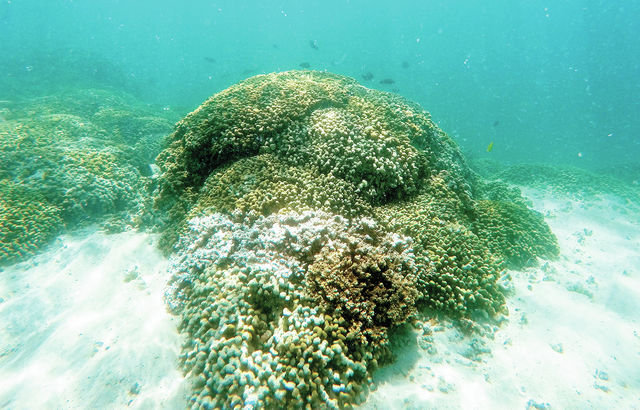HONOLULU — The state of Hawaii is gathering information from the scientific community and local stakeholders to create a comprehensive coral reef management plan, but officials said Monday they will not yet impose a requested moratorium on collecting aquarium fish.
HONOLULU — The state of Hawaii is gathering information from the scientific community and local stakeholders to create a comprehensive coral reef management plan, but officials said Monday they will not yet impose a requested moratorium on collecting aquarium fish.
Officials said that after gathering more information they hope to be able to start implementing a management plan by the end of 2016. Their goal is to emphasize resilience and restoration of reefs that are suffering in the face of global warming.
In response to a request from the State Office of Environmental Quality Control to temporarily halt the taking of Hawaii’s plant-eating reef fish for use in aquariums, officials said commercial collection of those species does not have a significant impact on the overall health of the state’s coral reefs.
“We don’t have science showing a strong nexus right now between aquarium fish trade collecting and the health of our coral reefs,” State Department of Land and Natural Resources chair Suzanne Case said. She added that data gathered from the management plan will help address that issue.
Environmental groups had urged the state to consider the moratorium in response to this year’s extensive coral bleaching event in the islands.
Inga Gibson, the Hawaii state director of the Humane Society, said the state should do more to protect fish that live on the reefs, especially the herbivores that help keep the reef healthy.
“We believe that the department needs to go further,” Gibson said. “A few months ago the department took the stand to enact an emergency moratorium on the collection of sea cucumbers, and those are taken in much smaller numbers than those fish collected for the aquarium trade.”
William Walsh, an aquatic biologist with the state, said the grazing and excavating species of fish that actually help the reefs, including parrot fish, are the ones taken least for aquariums. He said he anticipates Hawaii’s management plan will address protection of those fish, but contends a blanket ban on aquarium fishing is not the answer.
“We have a lot of in-depth monitoring going on,” Walsh said. “Banning aquarium collecting would have zero effect” on the reefs.
Matt Ross, a commercial aquarium fisherman on Oahu, said fishermen rely on the ocean for their livelihood and have a vested interest in conservation. “It’s not the problem contributing to coral bleaching,” he said. “This is an emotional issue that’s being driven by animal rights groups, it’s not a conversation issue. They feel that it’s inhumane to take a fish and keep it as a pet.”
University of Hawaii’s Institute of Marine Biology director Ruth Gates, one of the world’s leading coral reef researchers, said that while any disruption in the reef ecosystem can be damaging, there is not a strong link between the aquarium trade and the bleaching being seen around Hawaii.
“I think the types of problems that we’re facing are probably a little bit beyond the aquarium fishing trade,” she said. “The problem is a big one, we’re talking about global warming-related issues right now.”
Gates added that while aquarium fishing may not be a major issue in Hawaii, it is a contributor to the failing health of many coral reefs around the world where fishermen come in and take all the fish from a particular reef.
“That type of fishing is not allowed here,” Gates said of Hawaii.
This summer, the state’s coral reefs suffered a second consecutive year of bleaching, a process in which the coral expels its symbiotic algae in reaction to hot ocean waters.
The black band disease was first spotted at low levels on Kauai in 2004, then identified on the North Shore of Kauai in 2012 at 10 times background levels, according to the DLNR. It continues to plague the three Montipora (rice) corals found around the island.
The places reported most affected by the disease are the reefs surrounding Makua (Tunnels), Anini and Anahola beaches as well as Ahukini Landing.
When coral loses its algae, it also loses the nutrients the plant provides, and consecutive years of bleaching can kill coral.
In early October, the National Oceanic and Atmospheric Administration said that coral reefs worldwide were experiencing bleaching.
Scientists say about 30 percent of the world’s population of coral has perished as a result of above-average temperatures, El Nino’s effects and acidification.


